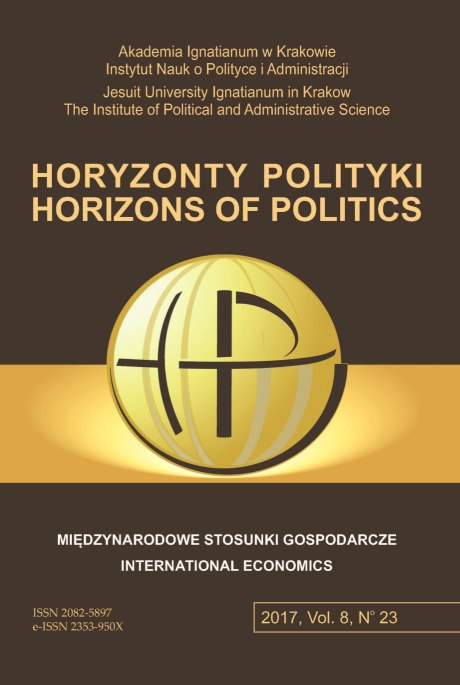Wkład imigrantów z państw Europy Środkowo-Wschodniej w produkt innowacyjny Stanów Zjednoczonych. Wyniki badań
Contribution of immigrants from central and eastern European countries to the innovative output of the United States. Research results
Author(s): Małgorzata WachowskaSubject(s): Psychology, Methodology and research technology, Social development, Social differentiation, Migration Studies
Published by: Uniwersytet Ignatianum w Krakowie
Keywords: brain drain; knowledge transfer; international talent migration; Central and Eastern Europe countries;
Summary/Abstract: RESEARCH OBJECTIVE: The purpose of the paper is to estimate the con‑ tribution of immigrants from Central and Eastern Europe to innovation output of the United States measured by the number of inventions. THE RESEARCH PROBLEM AND METHODS: The research problem is the efficiency of international talent migration in international knowledge flows, and more precisely, of mobile inventors in transferring knowledge to the host countries. The paper uses a method of analysis of patent data and data from domestic statistics of various countries. THE PROCESS OF ARGUMENTATION: First, the number of inventions created by immigrants from Poland, Hungary, the Czech Republic, Slovakia, Lithuania and Ukraine in the United States has been estimated and the percent‑ age of these inventions in the total number of American inventions as well as the breakdown of the immigrants’ inventions by technological areas, industries and inventors’ sex have been determined. Subsequently potential losses for the sending countries due to talent drain have been estimated. To this end, the share of inventions created in the United States by immigrants in the total number of inventions created by their compatriots in their home country has been estimated. RESEARCH RESULTS: The greatest role in increasing the innovation output of the United States is played by immigrants from Poland, whose contribution into the innovation output is 0.16% of the total number of inventions filed for protection by American residents. The contribution of other immigrants ranges from 0.01% to 0.15% with the smallest role in the promoting of innovation played by Lithuanians. CONCLUSIONS, INNOVATIONS AND RECOMMENDATIONS: Because of the fact that there is a visible difference between large and small countries with regard to the losses they incur due to talent drain, policy measures of particular groups of countries should reflect different approaches to the “brain drain” phenomenon.
Journal: Horyzonty Polityki
- Issue Year: 8/2017
- Issue No: 23
- Page Range: 77-99
- Page Count: 23
- Language: Polish

